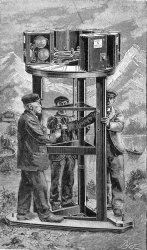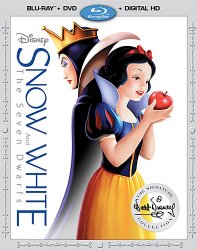One Hundred Years of Film by Gerry Orz
 The year 1888 may not seem too important. It has three 8’s in it! This is the year the first movie camera came to life. 138 years later, we now have upgraded from a few frames per second to a standard 24 frames per second for motion pictures.
The year 1888 may not seem too important. It has three 8’s in it! This is the year the first movie camera came to life. 138 years later, we now have upgraded from a few frames per second to a standard 24 frames per second for motion pictures.
Along the way, we discovered ways to add color and music to films and decided to create stories using this mysterious equipment. We learned to add editing techniques that took hours to create, such as a title displaying what the person is saying! You’d think that would be it right? No. We then added speech, but let’s not rush ahead.
A popular art called animation that existed through flipping pictures and moving plates, discovered this strange thing called “film” and combined forces. In 1900, these two arts came together to form the first filmed animation. Amazing huh? Couldn’t get any better? But, it did. Genius directors figured out they could color the frames and do things to them to add effects and color. They kept improving cameras with better sound and better visual quality. Eventually, they figured out a way to not have to spend weeks coloring each scene and just let the good old camera slave for them. These enhancements in cameras were unbelievable.
 You wouldn’t believe it could get better but again, it did. In the early 1930s some crazy man decided to do something everyone thought was impossible, a dumb idea, and one that would ruin his career. However, this idea caused his career to flourish and he created one of the largest companies in the world. This man’s name is Walt Disney and his passion drove him to create the first color feature animated film called Snow White and the Seven Dwarfs.
You wouldn’t believe it could get better but again, it did. In the early 1930s some crazy man decided to do something everyone thought was impossible, a dumb idea, and one that would ruin his career. However, this idea caused his career to flourish and he created one of the largest companies in the world. This man’s name is Walt Disney and his passion drove him to create the first color feature animated film called Snow White and the Seven Dwarfs.
However, people were tired of having to drive or walk to the theater so, in the 1920s we got television! Now people got to watch shows, movies and more, right in their own living room. How fun! For a while, nothing happened that is worth mentioning. The sound improved, the film editing got easier, the picture quality got MUCH and I mean MUCH better. We have seen some pretty cool movies such as Gone With The Wind and some random movie called Star Wars A New Hope, Jurassic Park, E.T. the Extra-Terrestrial and a few others.
Animation took a huge leap since its birth in Snow White. Directors started using something called stop motion animation, which made the illusion of things, like clay and bricks move around! Then, along came digital cameras, which moved away from bulky film. This allowed for digital editing software, special effects and the next generation of animation – CGI, or computer generated graphics. We first really saw this in Jurassic Park, with its amazingly realistic digital dinosaurs and in the late 1990s, we got a film completely created on a computer, Toy Story. Audiences stored movies and TV shows on videotapes and then DVDs, which had better quality and were less bulky!
Next, we got Blu-Ray, with even more vibrant colors and high definition images. Imax, with its 70mm film came into theaters, displaying films on extremely large screens in very clear quality. 3D and 4D came next, 3D making the picture jump out to you in 3 dimensional imagery and 4D allowing you to “smell” what’s going on in the film. Next, audiences decided to follow the trend of boycotting theaters as the industry released 3D TVs, and soon, curved 4K smart TVs that allows you to watch th eater quality imagery from your couch, bed or on your phone!
eater quality imagery from your couch, bed or on your phone!
Now, we wait for the future – for better cameras and more affordable ones. The entertainment industry continues to surprises us. Who knows, maybe you will be the next one to build an 8K TV or a hovering camera that can record in all spectrums. The future is mysterious and also, exciting!

